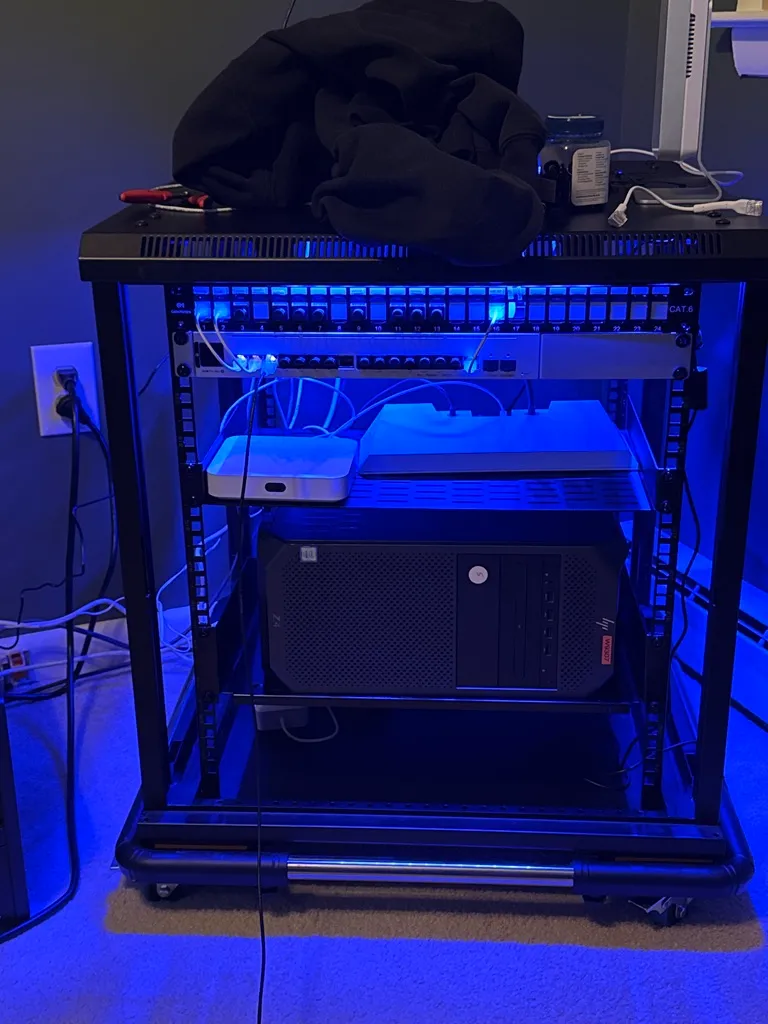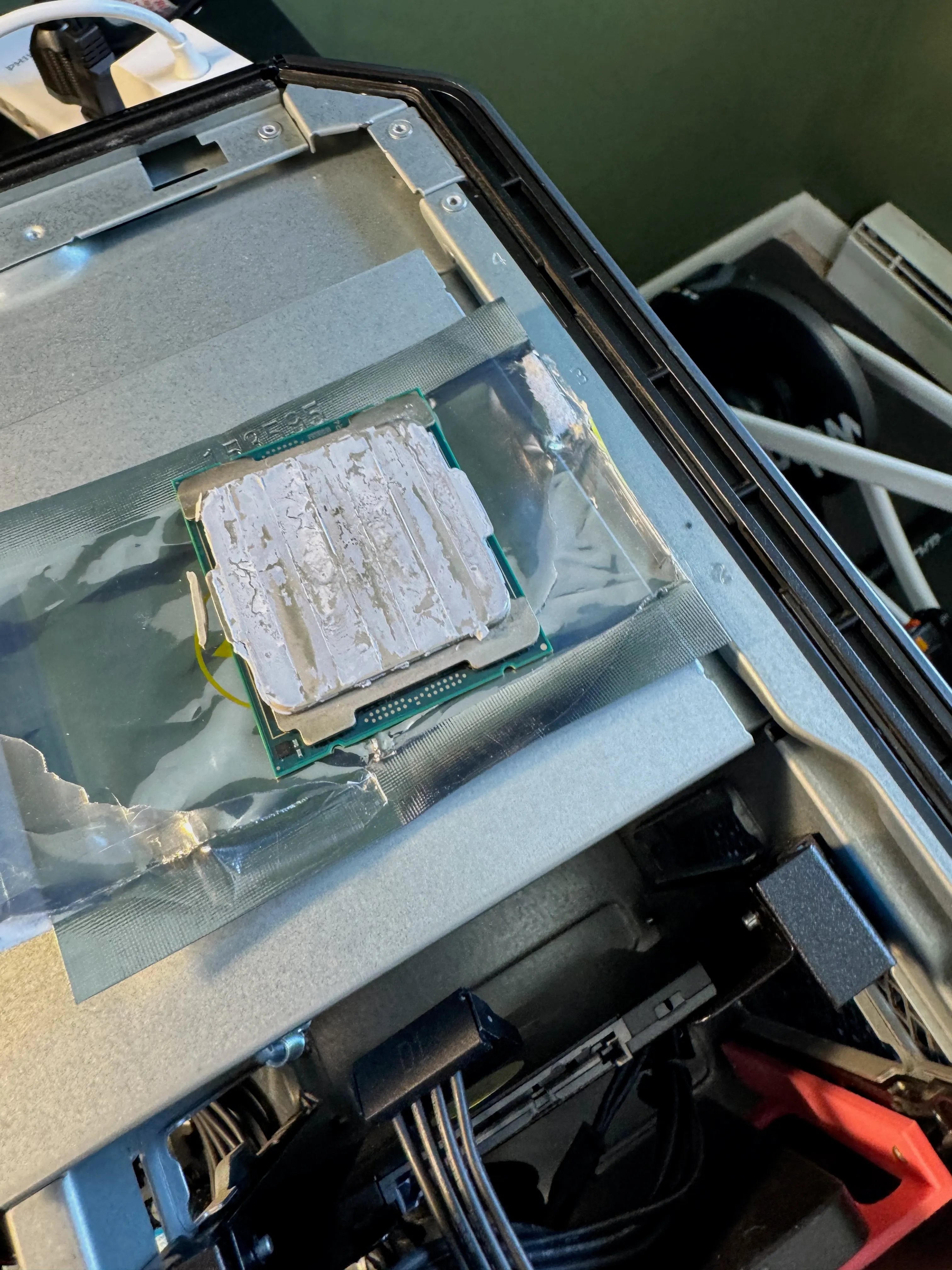Unsurprisingly I have yet to consistently post on my blog about my tech adventures. Although, thanks to a recent move, I now have a dedicated office/homelab/tinker space!
Moving
My wife’s job requires moving every now and again, and after being in a temporary living situation we’re now moved into what will be home for the next few years. With moving, I obviously had to take down my entire homelab and network setup, but more on that in a second. The move was more or less like every move you may have experienced, amazed at all the stuff you have and even more amazed you have friends and family willing to help move all the stuff.

Starting Over
Wiring the House
Funny enough, the last blog post I wrote was on the current hardware and software in my homelab and while most has not changed, there are a few notable updates. I think the biggest thing to note though is due to this houses construction and previous tenants, there was coax for TV ran into all the bedrooms and living room via the basement. This made for a very easy and quick way to run ethernet to all the rooms and have them all terminate in my office. I just cut the coax and tapped the ethernet to it, then pulled! In total it’s only 3 runs currently, but I would like to do a few more for cameras, and another access point (ap) on the other side of the house by the garage.
Internet in a Deadzone
With the cable runs out of the way, we can now get into the more “fun” parts. Thanks to where this house is located, the only internet I could get was dated DSL. There’s not even cell service from any carriers, at least not enough to be useful unless you’re outside. Due to working from home and in general being a nerd, I opted for Starlink instead. I may do a separate writeup for that, but the TLDR is it’s great and shockingly stable.
Hardware Upgrades
With the internet connection sorted it was onto the homelab. I’ve been doing a bit more architecture and engineering style projects within the SOC and want to continue on that path for the time being. Part of that learning path is going to be kubernetes (k8s), which while the cloud is fairly cheap, or even free for awhile, I wanted to be able to mess around with it locally should I want to do something silly and cluster some raspberry pi’s. The CPU in my proxmox host was a lethargic weakling at just 4 cores, 8 threads, and didn’t even turbo past 4Ghz. I remedied this with more used hardware, replacing the w-2123 with a W-2155! While still old, the W-2155 was $150 used on ebay, and I now have 10 cores (20 threads) and a turbo speed of up to 4.7Ghz! Being able to assign 8 threads to a VM on top of my other services running is a great and I have no excuses for bottle necks. Well… there was one more bottle neck… the lack of CUDA.

Dammit HP
As a reminder my proxmox host is an HP G4 Z4 that I picked up on facebook marketplace. It came with an AMD 5XX series card in it that ran off a single 8pin connector via an 2x6ping to 1x8pin adapter. HP actually has that as a purposeful design and over engineered some of the components to handle the additional amps, so much so that HP had made a 6pin to 8pin adapter. If you’re familiar with modern day cards you know that most take 2 8pins for power. This HP chassis only has the 2 6pin connectors, meaning the 1070FTW I got from a friend was basically useless. After doing too much research for too long, I discovered that I had the 750w PSU version and HP also shipped a 1000W PSU. The 1000w PSU had one sku but two configurations (again, dammit HP), configuration 1 had 2x6+2pin connectors, with configuration 2 having 4x6+2ping connectors. I figured either way it would solve my problem and I could have a CUDA supported GPU for some local LLM shenanigans.
Somehow the ebay gods were in my favor and I ended up with the 4x6+2 PSU! After swapping that in, I squeezed the 1070FTW into place and got the machine back into my rack.
Backups Vs. IaC
The biggest takeaway from all of this has been that while backups are great to get back to where you were, it doesn’t make starting over all that easy. While most would take starting over as completely tearing everything down and rebuilding, I just wanted to more so update everything to a more sustainable point. My docker-compose files might still be valid, but I’d have to restore the VM and pull the files. This made me a bit nervous as my proxmox host had basically died since the last blog. I’ve since reinstalled proxmox 9 and it’s been fine.
I’ll also be installing proxmox a bunch more times as I may have recently acquired some rack servers… but that’s for another day.